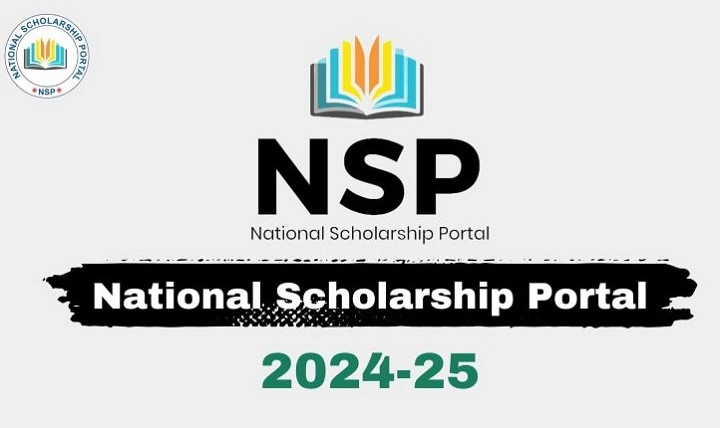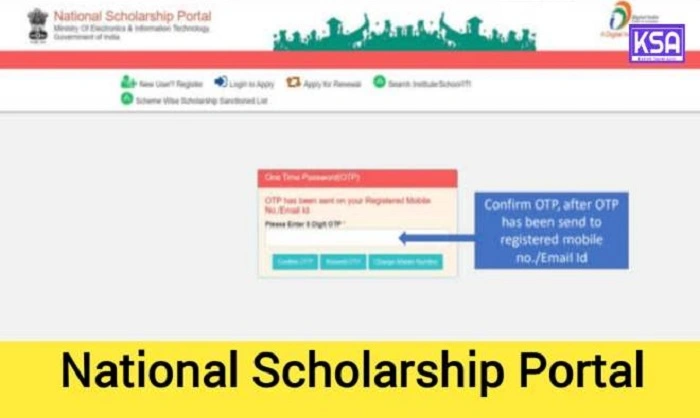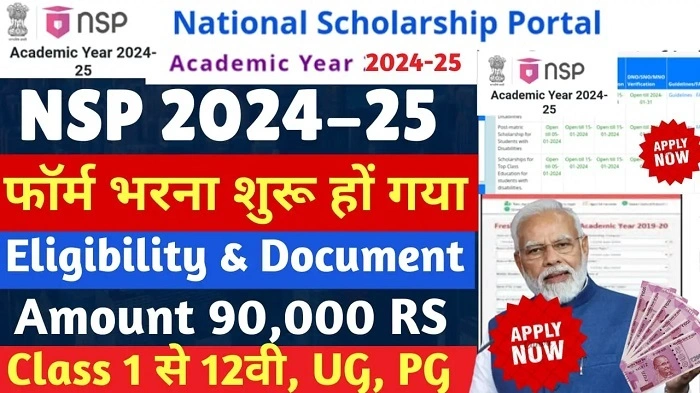The National Scholarship Portal (NSP) is a transformative initiative by the Government of India designed to streamline the process of scholarship applications for students across the country. In a nation where education remains the key to empowerment, the NSP offers a beacon of hope to students from underprivileged and marginalized backgrounds by simplifying access to various government-sponsored scholarships. Launched with the vision of making scholarships more accessible, transparent, and efficient, the portal serves as a centralized platform that connects students to a vast array of scholarships—covering pre-matric, post-matric, merit-based, and need-based programs.
In this article, we will delve into the latest updates and news surrounding the NSP, its impact on the educational landscape, and how it continues to shape the future of millions of Indian students.
The National Scholarship Portal: An Overview
The NSP is a one-stop solution for all scholarship-related services. Managed by the Department of Electronics and Information Technology under the Ministry of Electronics & Information Technology (MeitY), it integrates various scholarship schemes from different departments of the Indian government, such as the Ministry of Minority Affairs, Ministry of Social Justice & Empowerment, and the Ministry of Tribal Affairs, among others.
The portal aims to:
- Simplify the scholarship process by providing a single platform for students to apply for multiple scholarships.
- Ensure transparency in the scholarship disbursement process.
- Provide a uniform platform for both the application and selection of students.
- Allow for the monitoring and tracking of applications, reducing the risk of fraud and duplication.
With a focus on both merit-based and need-based scholarships, the NSP has been a game-changer in ensuring that financial constraints do not hinder the dreams of deserving students.
Latest News and Updates on NSP
Expansion of Scholarship Schemes
In 2023-24, the NSP saw a significant expansion in the number of scholarship schemes available. Several new scholarships targeting students from marginalized communities have been added, including those for economically weaker sections (EWS), scheduled tribes (ST), and scheduled castes (SC). These schemes aim to cover the financial needs of students in higher education, especially those pursuing professional and technical courses.
Additionally, the Ministry of Education has introduced specialized scholarships for female students and those pursuing STEM (Science, Technology, Engineering, and Mathematics) subjects. This move is expected to help bridge the gender gap in STEM education and encourage more girls to pursue careers in these fields.
Enhanced Accessibility for Students with Disabilities
One of the most notable updates to the NSP in recent years has been the increased focus on students with disabilities. The platform now offers specific scholarships that cover the cost of assistive devices, special education resources, and even transportation for differently-abled students. With these updates, the NSP is making strides toward ensuring that no student is left behind due to physical or mental challenges.
Introduction of Real-Time Monitoring
To enhance the efficiency and transparency of scholarship disbursement, the NSP introduced a real-time monitoring feature in 2023. This allows both students and educational institutions to track the status of applications, helping to reduce delays and ensure that funds reach the beneficiaries in a timely manner. This feature is part of the government’s larger effort to digitize and streamline administrative processes, thereby reducing corruption and improving service delivery.
Integration with DigiLocker
A major milestone for the NSP was its integration with DigiLocker, a government-backed cloud storage service. This collaboration allows students to upload and store important documents—such as mark sheets, certificates, and identity proof—in a secure digital environment. Not only does this make the application process smoother, but it also minimizes the risk of document loss and duplication. Students can now directly link their DigiLocker accounts to the NSP portal, making document verification and submission much more efficient.
Extended Deadlines Amidst COVID-19
The COVID-19 pandemic brought unprecedented disruptions to the education sector, with students and institutions alike struggling to adapt to the new normal of online learning. Recognizing the challenges faced by students, the NSP extended the application deadlines for several scholarships during the 2020-21 and 2021-22 academic years. These extensions were crucial in ensuring that students had ample time to gather the required documents and submit their applications without additional stress.
Moreover, the government has introduced special scholarships for students who lost one or both parents to COVID-19. These scholarships are aimed at providing financial support to such students, ensuring that their education is not derailed by personal tragedies.
Key Scholarship Schemes on the NSP
The NSP hosts a wide range of scholarships catering to different demographics and needs. Here are some of the most popular and impactful scholarship schemes available through the portal:
Pre-Matric and Post-Matric Scholarships for Minorities
The Ministry of Minority Affairs offers both pre-matric and post-matric scholarships to students from minority communities (Muslim, Christian, Sikh, Buddhist, Jain, and Zoroastrian/Parsi). These scholarships aim to reduce dropout rates at both the school and college levels by providing financial assistance to students from disadvantaged backgrounds.
The pre-matric scholarship covers students from classes 1 to 10, while the post-matric scholarship is aimed at students pursuing higher education (class 11 and beyond). The scholarships cover tuition fees, maintenance allowances, and other incidental costs, making education more affordable for minority students.
Merit-cum-Means Scholarship for Professional and Technical Courses
The Merit-cum-Means Scholarship, also offered by the Ministry of Minority Affairs, is specifically designed for students pursuing professional and technical courses at the undergraduate or postgraduate level. This includes fields such as engineering, medical sciences, management, and law. The scholarship covers a significant portion of the course fees and provides maintenance allowances to help students focus on their studies without financial worries.
Post-Matric Scholarship for SC/ST Students
The Post-Matric Scholarship for SC/ST students is one of the largest and most comprehensive scholarships available through the NSP. Managed by the Ministry of Social Justice and Empowerment, this scholarship aims to support students from scheduled castes and tribes who are pursuing higher education in any discipline. The scholarship covers tuition fees, books, boarding, and lodging expenses, making it easier for SC/ST students to continue their education beyond secondary school.
Scholarships for Top-Class Education for Students with Disabilities
As part of the government’s commitment to inclusivity, the NSP offers a range of scholarships specifically for students with disabilities. These scholarships cover the cost of tuition, assistive devices, and special education resources, ensuring that differently-abled students have equal access to quality education. Additionally, the scholarship provides financial support for transportation, allowing students to attend schools and colleges that may be far from their homes.
National Means-cum-Merit Scholarship (NMMSS)
The National Means-cum-Merit Scholarship Scheme (NMMSS) is a central government initiative aimed at providing financial assistance to economically disadvantaged students who demonstrate academic potential. The scholarship is awarded to students in class 9 and continues through class 12, provided that they maintain satisfactory academic performance. This scholarship helps bridge the gap between merit and means, ensuring that bright students from low-income families are not forced to abandon their education due to financial constraints.
How to Apply for Scholarships on the NSP
The application process on the NSP is designed to be simple and user-friendly. Here’s a step-by-step guide on how students can apply for scholarships through the portal:
Registration
To begin the application process, students must first register on the NSP portal by providing basic information such as name, date of birth, contact details, and identification proof. It’s important to ensure that the details entered during registration match the documents being uploaded, as any discrepancies can lead to rejection of the application.
Filling in the Application Form
Once registered, students can log in to the NSP portal and fill in the scholarship application form. The form requires details such as the student’s educational background, family income, and the specific scholarship for which they are applying. It’s important to carefully review the eligibility criteria for each scholarship before submitting the application.
Uploading Documents
After completing the application form, students must upload the necessary documents to support their application. This typically includes mark sheets, income certificates, caste certificates (if applicable), and bank account details. With the recent integration of DigiLocker, students can now upload documents directly from their DigiLocker accounts, making the process faster and more secure.
Tracking Application Status
Once the application has been submitted, students can track its status in real-time through the NSP portal. This feature allows students to stay informed about any updates or issues with their application, ensuring transparency throughout the process.
Receiving Scholarship Funds
Upon successful approval, the scholarship funds are directly transferred to the student’s bank account via Direct Benefit Transfer (DBT). This method ensures that the funds reach the beneficiaries without any middlemen, reducing the risk of fraud or delays.
Challenges and the Road Ahead
Despite its many successes, the NSP is not without its challenges. One of the major issues faced by students is the lack of awareness about the available scholarships, particularly in rural and remote areas. Many students who are eligible for financial assistance remain unaware of the opportunities available to them, either due to limited access to information or because of digital illiteracy.
Another challenge is the processing time for some scholarships, which can take several months from the date of application to the disbursement of funds. While the real-time monitoring feature has improved transparency, there is still room for improvement in terms of speeding up the application review process.
The government has been working on addressing these challenges by conducting awareness campaigns, particularly in rural areas, and improving the digital infrastructure of the portal. As the NSP continues to evolve, it is likely that these issues will be mitigated, making the scholarship process even more efficient and accessible.
The National Scholarship Portal has been a game-changer in democratizing access to education for millions of Indian students. By bringing together various government-sponsored scholarships under one umbrella, the NSP has simplified the application process, ensured transparency, and reduced the risk of fraud. Its integration with platforms like DigiLocker and the introduction of real-time monitoring are testaments to the government’s commitment to making education accessible to all.
As the NSP continues to expand and evolve, it holds the potential to further bridge the gap between merit and financial need, ensuring that every deserving student has the opportunity to pursue their dreams. Whether through scholarships for minorities, students with disabilities, or economically disadvantaged students, the NSP is paving the way for a brighter and more equitable future for India’s youth.




